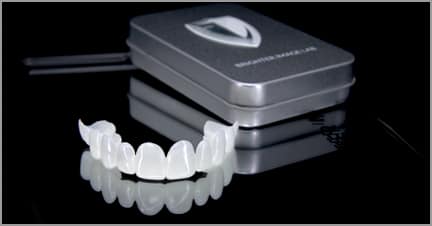Fluorosis – Protecting Our Children
For decades dentists have informed us that our children need fluoride to shield their teeth from cavities. The fact is, fluoride is completely toxic. When consumed in high concentrations, fluoride causes dental fluorosis.
In 1997, Dr. John Colquhoun stated, “Common sense should tell us that if a poison circulating in a child’s body can damage the tooth-forming cells then other harm also is likely.” (Lindsay, 2006).
What causes fluorosis?
Fluorosis is a dental term that describes the developmental disturbance in regards to the enamel. It is not a disease, but rather a cosmetic condition. As previously mentioned, exposure to high concentrations of fluoride causes fluorosis, especially during the years when the teeth are developing, typically up to age 8.
Luckily, once the teeth break through the gums they’re no longer susceptible to dental fluorosis. Unfortunately, that’s of little comfort to those already suffering from its effects.
The effects of fluoride on tooth enamel include lower mineral content and an increase in porosity. Typically, the child’s pediatric dentist measures the damage by examining the surfaces of the teeth when clean, dry and under good lighting. The dentist (or dental hygienist) will then inquire about the child’s fluoride intake. They may ask for the source of their drinking water and what toothpaste they use.
This information will help determine if anything appearing on the surface is, in fact, a direct result of dental fluorosis. If the dentist suspects dental fluorosis, they can further examine the child’s teeth and gums. X-rays are beneficial to make sure the teeth do not have any other defects, like cavities.
Diagnosing Fluorosis
There are other conditions that can present themselves similarly to fluorosis. For example, developmental defects or issues with the skull or bones surrounding the face can disrupt teeth’s enamel or dentin. A history of high fevers or trauma (like a fall that directly injures a tooth) may discolor teeth in infants or young children.
Young children are susceptible to cavities in their primary teeth, so it is important to never jump to conclusions when diagnosing a child with possible dental fluorosis. The child’s dentist should assess any and all tooth discoloration of concern. It’s important to note that dental fluorosis will not cause cavities. Cavities are a separate issue.
Limited treatment options exist for children with dental fluorosis. An article on Fluorosis from toothpaste manufacturer Colgate states “minor cases of fluorosis do not need to be treated, especially if the fluorosis is only on the back of the teeth”. However, considering that fluoride in toothpaste is the #1 cause of dental fluorosis, should we really be relying on a toothpaste brand to tell us what is and isn’t worthy of treatment? Or should we insist that those causing the problem leave the determination of whether a negligent poisoning is worthy of treatment – to the people they poisoned?! I think the idea that they’d have an opinion at all is an insult to those suffering!
Does fluorosis go away?
Many believe the appropriate treatment for mild cases of fluorosis is bleaching. Some treat moderate cases with micro-abrasion. This removes the outermost, affected layer of enamel from the tooth’s surface in an acidic environment. Though they treat the cosmetic appearance, the actual damage to the tooth’s enamel is irreversible.
Severe cases of fluorosis generally receive bonding, crowns or teeth veneers. The child’s pediatric dentist should discuss and administer any and all treatment options.
Then again, as with toothpaste brands, should we really ask the dentist to define the severity of fluorosis, when they pushed the fluoride treatments in the first place? Can we truly expect them to be unbiased when their own potential malpractice is in question.
Our Experience With Fluorosis
Because of our work, we receive a plethora of cases from individuals affected by fluorosis. In our own anecdotal experience, a disproportionate amount of these cases come from the state of Kentucky. Our understanding is that Kentucky is one of the most over-fluorinated states in the country.
The damage we see on the teeth of our clients is the result of exposure from 15 years ago, on some of these individuals. They come to us, ashamed to smile due to the effects of brushing with fluoride.
Presently, they want teeth veneers to give them confidence to start their business or go back to school – and we’re are thrilled to help them. But, until now no one has informed these individuals what they are suffering from – not even their dentists. And that’s alarming to hear!
The Rise of Fluorosis
It should come as no surprise that dental fluorosis was rarely found in western countries prior to the widespread use of fluoride in the dentist industry. Today, we see fluoride in most toothpastes, mouthwashes, not to mention many municipal water supplies will contain added fluoride chemicals. All these factors help to explain why dental fluorosis rates have been on the rise for years and have now reached groundbreaking levels.
Information collected from a survey by the Centers for Disease Control revealed that 41% of American adolescents have some form of fluorosis. That’s an increase of 400% from just 60 years ago. So far, dentists continue to push fluoride treatments without properly informing parents of the potential risks, and fail to adequately educate on how to measure and manage the amount of fluoride their child is consuming.
White Spots, Brown Spot & Stains On Teeth
The visual effects of Fluorosis dictates the severity.
Questionable: Normal, healthy teeth appear to have a smooth, glossy surface, that’s typically a pale white color. A possible indicator of the presence of dental fluorosis is an appearance of slight aberrations on the enamel. This can range from just a few white flecks to occasional white spots. This level of possible fluorosis is labeled “questionable” because it cannot be diagnosed as the mildest form of fluorosis, but it also can’t be classified as normal.
Is dental fluorosis dangerous?
Mild Fluorosis: A very mild case of fluorosis is small, opaque, paper white-areas that are typically scattered irregularly over the tooth. It involves less than 25% of the tooth’s surface area. Teeth also show no more than 1-2 mm of white opacity at the tip of the summit of the cusps of the bicuspids or second molars.
Mild dental fluorosis typically presents itself with bilateral, opaque, white striations that will run horizontally against the enamel. The opaque areas may form white patches. Yet, it does not involve more than 50% of the tooth.
Moderate Fluorosis: Moderate cases will affect all enamel surfaces of the teeth. The surfaces will show wear as brown staining as the main feature. Teeth can also begin to erode and even crumble.
Severe Fluorosis: In severe cases of dental fluorosis, the enamel can become discolored. The stains will not be present when the teeth initially irrupt in the mouth, as fluoresce enamel does not appear discolored. Stains will develop over time, which is due to diffusion of exogenous icons, such as iron and copper, into the abnormally porous enamel. These stains appear brown and are widespread, making the teeth look corroded. All enamel surfaces are now affected. Hypoplasia is also present. The general form of the tooth may also be affected.
The visual effects of dental fluorosis can greatly affect one’s self-esteem. Children who have dental fluorosis can suffer great embarrassment over the appearance of their teeth.
Why aren’t dentists concerned with fluorosis?
If dentists know, first-hand the effects of fluorosis, why are they waiting until there’s an issue to address this topic? They do know children cannot reverse the appearance by brushing and flossing, which is very discouraging.
The severe cases of fluorosis can cause a child to appear as if they have rotten teeth, something sure to illicit harsh judgment from others. Even the milder forms of dental fluorosis can have an effect on a self-esteem.
We live in a society that places a high value on the look of one’s smile and teeth. Someone suffering the effects of dental fluorosis is often viewed as less attractive and less pleasing compared to those with unaffected teeth.
If dentists are aware of this appalling outcome, where is the demand for a showing of care and compassion. We should expect dentists to fully disclose fluoride’s dangerous effects to their patients.
Shockingly, we’ve accepted cases in which our clients come to us in their 20s or 30s not even realizing they have fluorosis. Despite their teeth being an embarrassing hindrance to their life and happiness, many people haven’t even identified fluoride as the source of their suffering.

Is there enough fluoride in water to cause fluorosis?
Fluoride In Water & How Much is Too Much Fluoride
When it comes to dental fluorosis, water fluoridation is an extremely controversial topic. Some view it as a public health measure, while others consider it an example of mass, systemic poisoning.
That extreme view isn’t unfounded, considering fluoridated water accounts for 40% of all dental fluorosis cases. We consume these (sometimes) dangerous levels of fluoride via drinking water, children’s formula, or foods prepared with public drinking water.
Fluoride levels in municipal water supplies can range from 0.7 to 1.0ppm. This number will vary depending many factors, including the time of the year.
Can fluorosis be cured?
When it comes to fluorosis, prevention is key. That’s why it is imperative for pediatric dentists to educate parents in regards to the fluoride content in their child’s overall exposure level. This warning should include the source of their drinking water. You can obtain this information through the local water supply company, if not already known.
In addition to drinking water, diet can also contribute to fluorosis. Any food items or sodas manufactured with fluoridated water will also contribute to the development of dental fluorosis. You should account for all areas with great attention when it comes to the total fluoride intake for infants. This includes everything from water used to dilute formula, to food and other supplements.
The Benefits of Fluoride
There are very few studies that show any significant benefits from drinking water containing fluoride. This is surprising considering the potential risks of consuming too much fluoride because of a fluoridated water supply.
The prevailing belief that a fluoridated water supply reduces the prevalence of tooth decay is simply not supported by the data. Yet, many communities pay to add fluoride to their local water supply anyway.
Some studies even showed that cities which did not add fluoride to their drinking water had fewer cavities when compared to cities that did. The World Health Organization found that while only 3% of western European countries fluoridate their water, they have the same rate of dental cavities as areas that do not.
This study, and many other with similar results, should give you pause. Why are we drinking fluoride in the first place? We must remind ourselves that fluoride itself is a toxic substance. So why, then, are we exposing ourselves to these toxins intentionally, through our water supply?
Is All Fluoride Created Equal?
Most people don’t realize that fluoride added to city drinking water is not the same, pure, sodium fluoride found in toothpaste. Instead, it is made from industrial toxic waste. This industrial waste is 26 percent hydrofluorosilicic acid and 74 percent wastewater, which often contains toxic heavy metals.
Most people would be horrified to know that It is not purified or regulated. In water treatment plants, they found stainless steel fixtures (in rooms where fluoride additives are handled) completely corrode after prolonged exposure. That really puts the power of fluoride in perspective!
Fluoride Toxicity
The causes and effects of fluorosis are discussed thoroughly throughout this article. But, how much do you really know about fluoride itself?
Fluoride is the 13th most abundant element present in the earth’s crust. It belongs to the halogen group of elements. It’s found naturally in water, soil, even plants and animals. Trace amounts of fluoride is even found in all mineralized tissues in the body; such as bones, dentin, and of course, tooth enamel.
Though there are some benefits to fluoride, regulating the amount of fluoride is crucial. Fluoride is found both naturally and artificially in water. By the time we account for concentrated, fluoridated dental products and materials, it’s not hard for the average person to unintentionally consume too much fluoride. Fluoride consumed at elevated levels is know to have seriously detrimental effects on the human body.
Excessive Ingestion of Fluoride
It’s important to note that excessive ingestion of fluoride is typically traced to off-the-shelf oral hygiene products. In a large data collection effort regarding fluoride poisoning, the American Association of Poison Control (AAPC). determined that toothpaste ingestion was the main source of fluoride toxicity. Other likely culprits are mouthwashes and supplements.
Over 80% of the cases of fluoride toxicity reported, were in children under the age of 6. They found children of this age group ingest more toothpaste than is ‘recommended’ because their swallowing reflex is not completely developed.
Fluoride – Giving Poison To Children
For us, this begs the question, “If there is a high risk of accidental ‘overdose’, why do we offer this poisonous ingredient to children at all?!” In what other situation are parents instructed to give their child something dangerous? Especially when the only warning they get (in the fine print on a plastic tube) is, “oh, and don’t let them swallow?” It is only at the insistence of the dental industry that we are told this risk is necessary.
Then manufacturers flavor these fluoride toothpastes like candy. This reinforces the idea for children to ‘eat’ it voluntarily, rather than spitting it out as recommended. Why don’t we hold dentists to the same standards as a medical professional? If your general practitioner were to prescribe you medication that poisoned you, they’d lose their license. They’d be sued for malpractice, and possibly sent to jail. Yet dentists are doing every time they send patients home with a sample tube of toothpaste.
Other Health Concerns Caused by Fluoride Consumption
Fluoride consumption also goes beyond just damaging the teeth. Other health problems include bone cancer, brain cell damage, muscle disorders, arthritis, bone fractures, cell death, blood disorders, infertility, and more. The Great Boston Physicians for Social Responsibility reported, “Fluoride exposure, at levels that are experienced by a significant proportion of the population whose drinking water is fluoridated, may have adverse effects on the developing brain.”
In another study conducted by a British researcher, cells found within the pineal gland (a gland that contains calcified deposits that accumulate fluoride) were equally as susceptible to fluoride-induced toxicity as were teeth. The only difference is the pineal gland is not visible to the eye, while the teeth of course are.
The researcher stated, “The safety of the use of fluorides ultimately rests on the assumption that the developing enamel organ is most sensitive to the toxic effects of fluoride. The results from this study suggest that the pinealocytes may be as susceptible to fluoride as the developing enamel organ” (Luke, 1997).
What other, unseen damage is fluoride causing? How much more exposure will we be subjected to before they are discovered?
Reducing Fluoride Exposure
Concerned about how much fluoride is in your drinking water? You can usually find this information on your local government’s website. If your city is adding fluoride to the drinking water, reach out to your local representative and request they stop the practice of additive water fluoridation.
In this application, fluoride is essentially used as a medication to prevent tooth decay. Citizens would revolt if they knew your city added any other medication to the water supply..
And yet they contaminate our water intentionally without recourse. When we’re sick, we make the choice to go to the doctor and/or get prescribed medication. We don’t get that choice when they add fluoride to our water supply. Municipalities are taking it upon themselves to make health decisions on our behalf, and we’re letting them.
Removing Fluoride From Your Water
If your efforts to petition you city to stop fluoridating your water are unsuccessful, there are steps you can take to remove it. You can also get your drinking water from another source. Finding water processed by reverse osmosis or distilled is a good place to start.
If you choose to, you can also filter your own water to remove added fluoride. Using fluoride free water is particularly important for us in infant formula and baby food whenever possible.
We place formula-fed babies at a higher risk when tap water is used. Even though the risk may be small, using filtered water in baby formula is an easy way to protect your child against dental fluorosis.
One study found that babies given formula were exposed to 200X more fluoride than breastfed babies. Pediatrician, Dr. Yolanda White reported the following, “I diagnose dental fluorosis on average 5 times daily, but fluoride doesn’t only affect teeth. It can potentially affect the brain and nervous system, kidneys, bones and other tissues in young children during their critical stages of organ development.”
Seeking Alternative Dental Products
In addition to monitoring fluoride in the water, there are other areas to examine. Fluoride toothpaste is usually the largest source of fluoride intake for young children and a major risk factor for dental fluorosis. Ideally, provide your children with non-fluoride toothpaste whenever possible.
If your children do use fluoride toothpaste, always supervise them to ensure they’re using only a small amount of paste. Ensure they spit out the excess paste and rinse thoroughly. Also be aware that toothpaste is flavored (for example, bubble-gum, various fruit, candy, etc.). This can be misleading because children will have a greater desire to swallow it since the taste is enticing.
Questioning The Dentist
Another thing to mind when monitoring fluoride intake will be gel treatments at the dentist office. Only those at high risk for cavities should receive fluoride gel treatments. Still, most dentists continue to offer –sometimes insist on- fluoride treatment regardless of the patient’s cavity risk.
If your dentist offers you a fluoride gel treatment, make sure to inquire on their reasoning. Then decline the service if you feel their recommendation is based on adding billable services, rather than medical necessity.
Other Fluoride Concerns
Remember we mentioned fluoridated water is used to make foods and other beverages? That’s yet another area to be aware of. The more processed a food is, the more fluoride it’s likely to contain. Some amount of fluoride will be present naturally, even in fresh spring water and fresh foods (like fruits, vegetables, eggs, milk, and grains).
Mechanically processed chicken (like chicken fingers and chicken nuggets) is another hidden source of fluoride. These usually have elevated fluoride levels compared with hand-processed chicken.
This difference is due to the mechanical de-boning process which can increase the number of bone particles within the meat. Bone is the main place where fluoride accumulates in the body and that fluoride can leach into the meat in greater quantities, which broken, chipped, and smashed. Chicken meat has shown the highest levels of fluoride compared to any other mechanically de-boned meats.
Processed drinks like soda, juices, and sports drinks will contain more quantities of fluoride than processed foods. Bottled teas and instant teas contain higher levels of fluoride. Excessive tea consumption is linked to a bone disease known as skeletal fluorosis. On the other hand, some teas contain high levels of health boosting antioxidants which are good for overall health and also protect against fluoride toxicity.
Interestingly, Teflon-coated pans can also significantly increase the fluoride content of the food cooked in them. So in the context of food contaminates, use stainless steel pans, especially when cooking food for a child in their prime years of tooth development.
Fluoride In Medication
Medications are another source of hidden fluoride as many pharmaceuticals are fluoridated. Some medicines contain a “carbon-fluorine bond.” And some of these drugs are found to metabolize into fluoride within the body.
One such medication is Cipro. Other examples of chemicals that will break down into fluoride include: fluoridated anesthetics (such as Isoflurane & Sevoflurane), Niflunic acid, Flecainide, and Voriconazole. If these medications are prescribed, ask if there is a safer alternative available.
Obviously fluoride is an important topic and we feel strongly that not enough people are talking about it.
Why Fluorosis Matters
This is an issue everyone should care about. Particularly, if you have children with developing teeth. Though it’s not considered a disease, it can severely destruct the cosmetic appearance of the teeth, and may destroy a growing child’s self-esteem.
Fluoride is toxic. We’ve seen the corrosion of the teeth affected by it, and we can only imagine the internal the damage it can causes when consumed in unsafe amounts.
We don’t believe that fluoride is universally bad, but we do believe that there’s no enough research on the continued use as a public health initiative, and there is certainly not enough evidence to support the beneficial claims made by government officials and dentists.
You deserve more scrutiny, study, and more honestly from those that are here to serve and treat you. In fact – you should demand it.



















